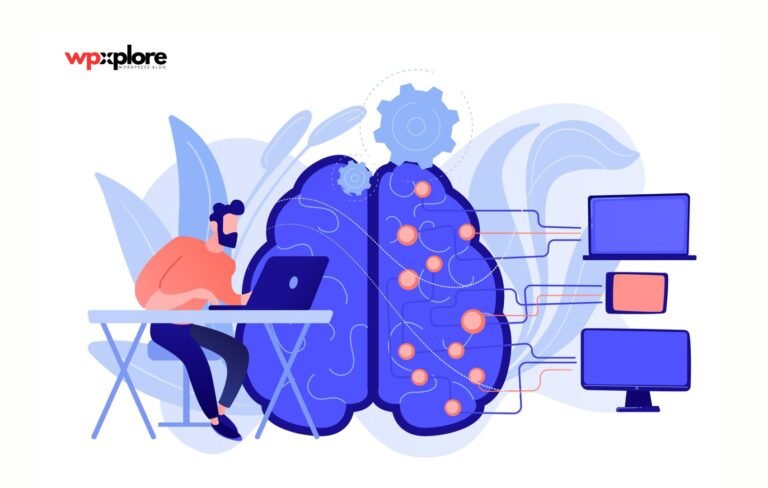Keeping up with fast-changing technology can be challenging. AI is increasingly important as it impacts our personal and professional lives and is becoming an essential part of our world. However, understanding AI, especially highly generative AI, can be confusing.
Everyone needs to learn the concepts behind Generative AI as it has a wide range of capabilities. With so much excitement and hype surrounding AI, it isn’t easy to discern what’s real and what’s not.
This in-depth article aims to simplify the concept of generative AI. By explaining its current capabilities and potential future applications, we aim to provide you with a clear understanding of how AI can benefit you or your business.
65% of users of generative AI are Millennials or Gen Z, and 72% of them are employed
What Is Generative AI?
Contents
Generative AI refers to advanced models that create new content based on existing data and user inputs. Unlike traditional AI, which focuses on solving specific problems, generative AI synthesizes new information by analyzing and understanding patterns in large datasets. This technology includes various models specializing in content creation tasks, such as text, images, audio, and video.
75% of users of generative AI are seeking to automate tasks at work and utilize generative AI for work communications
How Does Generative AI Work?
Generative AI operates through various models and techniques, each designed to handle specific types of data and outputs:
I. Generative Adversarial Networks (GANs)
GANs include two neural networks: a generator and a discriminator. The generator produces new content while the discriminator assesses its authenticity. This adversary process enhances the quality and authenticity of the generated outputs, making GANs highly effective for creating and modifying images.
II. Variational Autoencoders (VAEs)
VAEs encode input data into a compressed form and then decode it to generate new content. This model excels in tasks such as data compression and generative content creation by learning from the variations in the input data.
III. Transformer-Based Models
These models, such as ChatGPT, utilize self-attention mechanisms to comprehend and produce human-like text. They perform well in tasks like language translation, text generation, and question answering through analysis of extensive textual data.
IV. Autoregressive Models
These models generate content one step at a time based on the preceding text. While they can excel in short-form content, they may struggle with longer or more complex text sequences.
V. Diffusion Models
Diffusion models iteratively refine noise into coherent outputs, creating high-quality images and videos by denoising data through multiple stages.
Most Common Generative AI Use Cases
However, generative AI has some limitations compared to human work methods. Nevertheless, it is revolutionizing various industries through its versatile applications. Let’s take a closer look.
1. Creative Arts
AI tools like DALL·E enable artists to generate images based on textual descriptions. Similarly, models like AIVA can compose original music, providing artists new creative possibilities. AI-driven tools also transform video editing, allowing for automated enhancements and effects.
2. Gaming Industry
AI generates detailed characters, immersive environments, and dynamic storylines in gaming. This capability enhances the gaming experience by creating rich, interactive worlds and personalized gameplay.
3. Business and Marketing
AI assists businesses in designing products based on market trends and creating engaging marketing content. AI-powered chatbots streamline customer support, while tools like Gemini help generate promotional material and analyze market data.
4. Research and Development
AI accelerates research by analyzing complex datasets and predicting outcomes. It aids drug discovery, simulation, and prototyping, leading to faster innovations across various fields.
5. Education and Training
AI enhances learning experiences by creating interactive materials and personalized tutoring. It can break down complex concepts, adapt to individual learning styles, and provide immediate feedback.
Advantages of Using Generative AI
Generative AI opens up a world of exciting possibilities with its numerous advantages:
I. Innovation and Automation
AI facilitates the creation of new ideas and automates repetitive tasks, allowing individuals to focus on strategic and creative works. It can generate code, design elements, and more, streamlining workflows.
II. Personalization and Customization
AI personalizes content to individual preferences, enhancing user experiences in entertainment and fashion. Based on user data, it can generate personalized designs, recommendations, and interactions.
III. Accessibility and Inclusivity
AI tools improve accessibility by providing features like speech-to-text and automated content descriptions. This inclusivity extends to various user needs and abilities, ensuring broader participation in creative processes.
Limitations of Using Generative AI
Generative AI offers incredible benefits, but it also comes with certain limitations:
I. Data Biases and Unpredictable Results
AI models trained on flawed data can produce biased or inaccurate content, requiring careful oversight and validation of AI-generated outputs.
II. Limited Creativity
AI lacks creativity and relies on recombining existing information, limiting its ability to generate original ideas.
III. Ethical Concerns
Issues like copyright infringement, data privacy, and the potential for creating ‘Deepfakes’ raise ethical concerns, and addressing these is crucial for responsible AI development.
IV. Computational Cost
Training and operating AI models require significant computational resources, impacting cost and environmental sustainability. The high computational demands can create barriers for smaller organizations and contribute to environmental concerns.
Generative AI Tools
Explore the various applications of generative AI through these incredible tools.
a. Visual Art – DALL·E

OpenAI’s DALL·E generates images from textual prompts, allowing users to describe their desired outcomes and create visual content. It can produce anything from realistic portraits to imaginative scenes.
b. Writing and Research – Gemini

Google’s Gemini assists with writing, brainstorming, and research tasks. It integrates with Google Drive and Gmail, enhancing productivity and content creation.
c. Music – AIVA

AIVA generates music across various genres, offering a creative partner for composers and musicians. Users can customize their compositions and generate unique musical pieces.
d. Video Editing – Adobe Premiere Pro

Adobe’s Premiere Pro incorporates AI for intelligent video editing, including automated color corrections, audio transcription, and object removal.
e. Website Building – Hostinger Website Builder

Hostinger’s AI-powered website builder simplifies website creation. It generates site layouts based on user input and provides tools for customization and optimization.
Future Trends in Generative AI
Soon, generative AI has the potential to bring about significant progress.
i. Breakthroughs on the Horizon
AI is expected to generate increasingly realistic visuals and interactive experiences. Film, education, and product design innovations will use AI’s capabilities to expand the possibilities.
ii. AI Across Industries
Generative AI will continue to impact various sectors, including healthcare, where it may assist in personalized treatments and drug discovery. In everyday life, AI could enhance smart appliances and provide customized recommendations.
iii. The Responsibility of Power
As AI technology advances, addressing ethical and social concerns is crucial. Ensuring transparency, fairness, and responsible use will help harness AI’s potential while mitigating risks.

Final Remarks
Generative AI is upgrading industries by simplifying the development of innovative content and applications. It’s helping people create new and exciting things, like art, games, and business tools, much faster and easier. It’s used in many ways, from making movies to teaching kids.
Despite challenges like data biases and ethical concerns, generative AI’s responsible development and application can deliver substantial benefits. As AI progresses, it is poised to significantly influence the future in ways that are just starting to be envisioned.
Do you have any questions about generative AI, or do you know something new about it that you’d like to share?
Q.1. What’s the Difference Between AI and Generative AI?
Traditional AI focuses on solving specific problems, whereas generative AI creates new content by analyzing and synthesizing data.
Q.2. Can Generative AI Create Original Content?
Generative AI produces new combinations of existing data rather than entirely original content. Its outputs are unique but derived from pre-existing information.
Q.3. Are There Any Ethical Concerns Regarding Generative AI?
Yes, including data biases, copyright issues, and privacy concerns. Responsible use and oversight are essential to address these challenges.






Leave a Comment